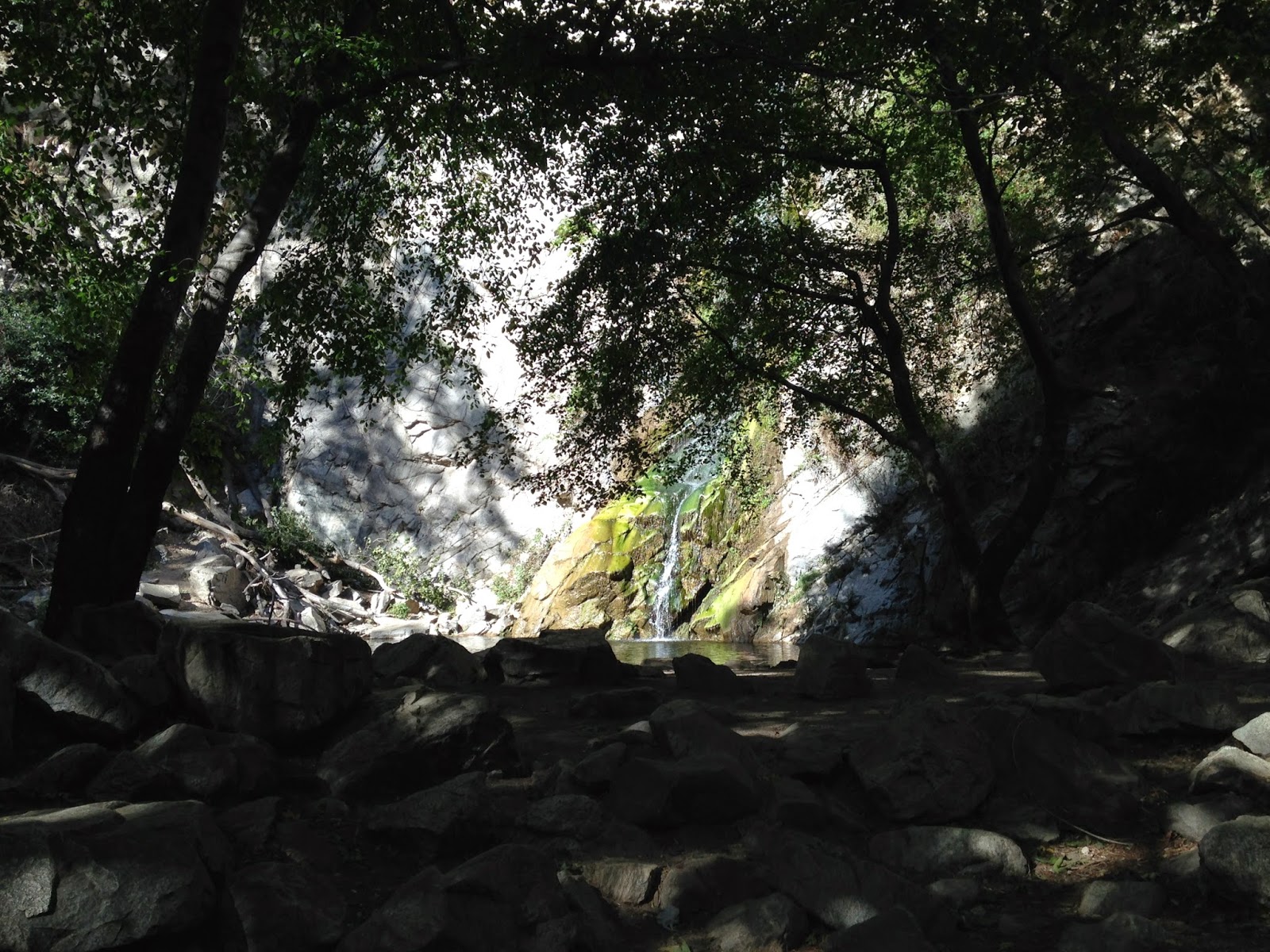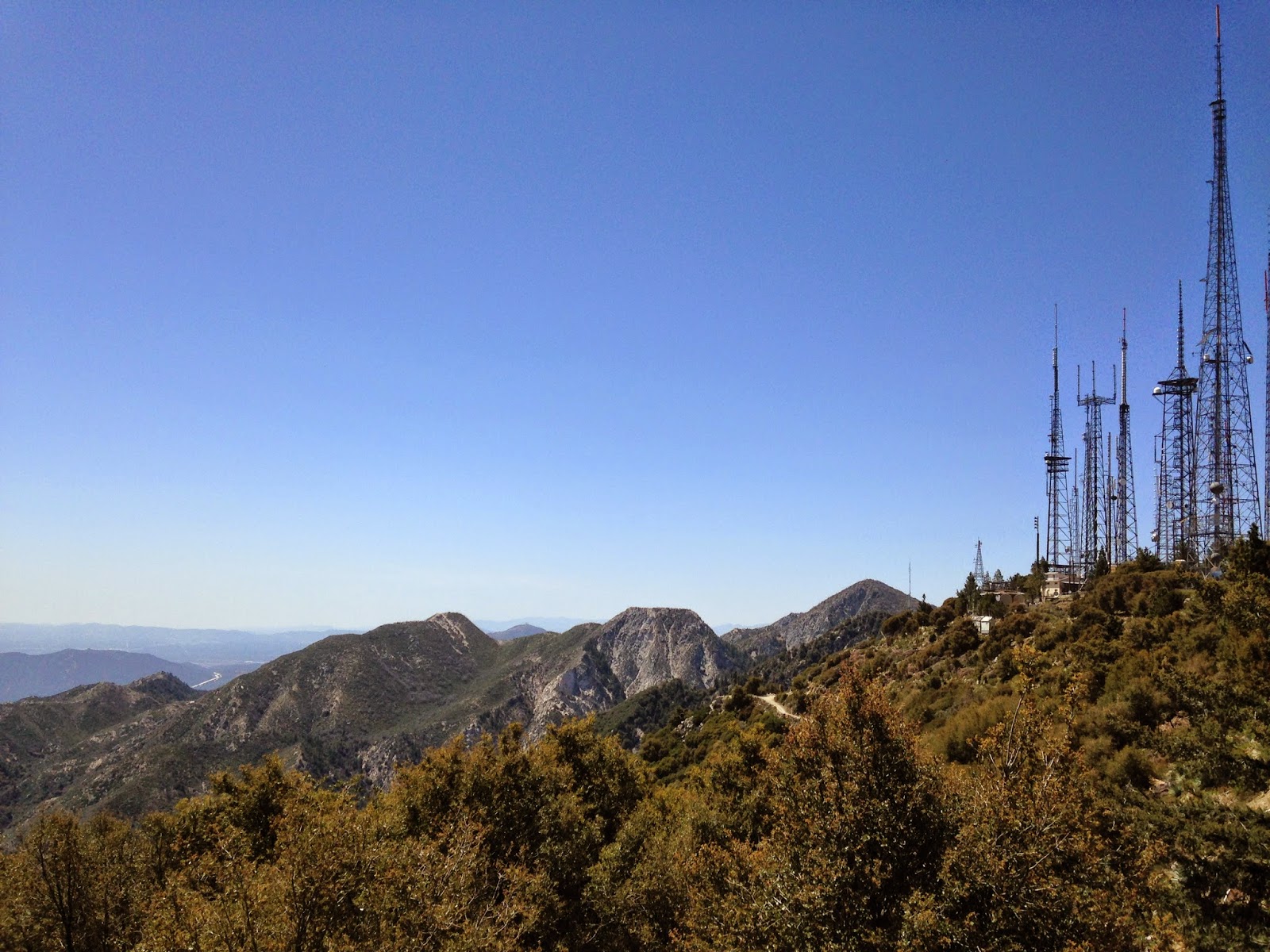The City of Redlands Police Department invited reporters and photographers to view their decommissioned military surplus Mine Resistant Ambush Protected vehicle for the first time Wednesday June 4.
"Redlands Police Rescue" is stenciled on the sides of the flat-black painted International MaxxPro MRAP, which cost taxpayers more than $500,000 to manufacture, according to the Department of Defense.
Redlands PD acquired its MRAP in September 2013, along with police from the cities of Banning, West Covina and Gardena.
The Banning police MRAP sustained two blowouts and crashed into a civilian's pickup truck during the convoy from Fort Bliss in El Paso, Texas. The Redlands police MRAP sustained no damage in the crash.
Ray Rodriguez, a City of Redlands truck driver, told Watershed News he drove the Redlands MRAP to Los Angeles and back about two months ago for its paint job, and it handled "like a Cadillac."
"I left a nickel on the back of the bumper here, and drove it from L.A. to Redlands, and it stayed on there," Rodriguez said. "When I got here it was still on the bumper."
Rodriguez said he got several reactions from other motorists.
"A lot of thumbs up. Some were blowing kisses. . . . the girls were blowing kisses."
Redlands Police Chief Mark Garcia describes his department's MRAP as a "rescue vehicle" to improve RPD's ability "to protect our community against any threats."
The ballistic rescue vehicle is a tool police can use in response to an active shooter or similar volatile, violent incident, Garcia says.
"The vehicle, provided at no cost to the City, was one of some 165 of the surplus vehicles provided to police departments nationwide as part of a national military surplus program started by President Bill Clinton in the 1990s," City of Redlands spokesman Carl Baker said in a statement distributed Wednesday.
"The Redlands Police Department applied for the MRAP to repurpose as a ballistic capable rescue / tactical vehicle that could be used to enhance the safety of officers and the public when responding to active shooter-type incidents," Baker said.
"Since that time, the department has repainted the vehicle and reconfigured the interior to make it suitable for its deployment as a rescue vehicle. While the vehicle includes a turret that will serve as an observation platform for officers, there are no weapons mounted on the vehicle," Baker said.
"The $28,000 cost to retrofit the vehicle was paid for entirely with asset seizure funds - the allocation RPD receives from the proceeds of property seized from convicted drug dealers. No General Fund money was used to purchase or retrofit the vehicle."
 |
| Redlands Police MRAP: June 4 2014 |
The MRAP is a military vehicle, "so the military paid money for it, which comes from taxpayer money generally, but in the City of Redlands, when the military re-purposed that vehicle to us for our police department, we have not spent any taxpayer money on the vehicle," Garcia said in an interview Wednesday.
Redlands Police did not have an armored vehicle at their disposal prior to their MRAP acquisition, but they could call "any police agency that has an armored vehicle and ask their assistance, so we're dependent upon them whether they have personnel to bring the vehicle in, whether their vehicle's even available if they're not using it," Garcia said.
"There's been times we've served search warrants that are high risk search warrants, that we've had other agencies bring in an armored vehicle to move the SWAT people into position to contact the suspects."
 |
| Inside the Redlands Police MRAP: June 4 2014 |
Garcia and the Police Department did not bring the MRAP acquisition to the City Council for approval or discussion, public or otherwise.
"The City Council does not have to approve the acquisition of a free vehicle," Garcia said Wednesday. "As the Chief of Police, I had the opportunity to do this, and made the decision that we needed to add something like to this our department to keep our officers safe."
 |
| View from turret of Redlands Police MRAP: June 4 2014 |
Given the incidents
local police and
deputies face from
time to time, it's no surprise law enforcement agencies are willing to accept free
combat-ready MRAPs with roof-mounted machine gun turrets.
But
as the Department of Defense continues giving away vehicles
designed for "asymmetric warfare," the American Civil Liberties Union
and others have criticized what they describe as the increasing
militarization of local law enforcement agencies, according to
an Associated Press report published by the Military Times.
Garcia dismissed such criticism as "ignorant."
"I think that's an ignorant position that somebody would say we're militarizing our police department because we use an armored vehicle to protect our officers," Garcia said.
"If a reporter was using a camera that was a high tech camera that could see a far distance and the military was using the same camera, would we make the same accusation against the reporter, that he was militarizing his craft by using the same type piece of equipment? I don't think so.
"I think that yes there's crossover in the types of tools that we might use with the military," Garcia said. "That has nothing to do with trying to militarize a police department.
 |
| Redlands Police MRAP: June 4 2014 |
"I know that for us, having previously been in San Bernardino, there were a couple of times where when soldiers were going to Iraq, they came and trained with our SWAT team to learn the tactics of how to go door-to-door, how to talk to people, and how to make contact in those types of situations."
Prior to coming to Redlands in 2011, Garcia was with San Bernardino PD beginning in 1987. In San Bernardino his duties included SWAT commander, and he was "actively involved in decisions to assist military units" that were going to Iraq in the mid-2000s, he said.
"So we're not going out and getting the military to train us, but the military has at times found it beneficial to be trained by police departments. I don't think there's any issue with militarization just because we're using a similar type of vehicle."
 |
| Redlands Police personnel and the department's MRAP: June 4 2014 |
Documentation shows the MRAP averages about 6.8 miles per gallon, Garcia said.
"We don't get'em for their mileage, we get'em for their protection capabilities . . . Any high risk situation. We're seeing incidents in Oakland and Pittsburgh where people have shot at the police, and they were in armored vehicles and that armored vehicle protected them. Any time you have to go into the line of fire it's not something to look forward to, but it's something we willingly do because that is our role in society is to help protect people."
All photos by Guy McCarthy
For more background see:
UPDATE: Police Acquisition of Armored Vehicles, Costly Crash Under Scrutiny
UPDATE: Councilman Blasts PD's Acquisition of MRAP Vehicle, City Manager 'Not Happy'
KESQ in December:
http://www.kesq.com/kesq/city-police-at-odds-over-military-vehicle/23555980
Washington Post roundup in April this year, including mention of Banning:
http://www.washingtonpost.com/news/the-watch/wp/2014/04/29/reader-submissions-from-small-towns-that-are-militarizing-their-police-forces/
-30-





















